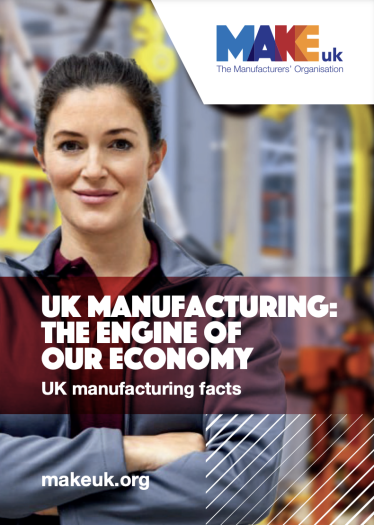4 minute read - 29th July 2024
UK manufacturing overtaken in world rankings but not because of decline in UK industry
The UK’s manufacturing sector has been bumped out of the top ten world rankings, moving to twelfth, according to the latest analysis of official figures published by Make UK. The data shows it is not because of a decline in UK manufacturing but specific trends and other factors in the countries that have climbed the rankings.
The latest figures are contained in the latest annual ‘Manufacturing – The Facts’ which contains a wide variety of data about the contribution of manufacturing to the economy including exports, sectoral breakdown, how the UK compares to other nations and salary levels.
The data shows that in 2022 (the latest year for which global comparisons are available) UK manufacturing output was worth $259bn (1). This is behind Mexico ($316bn) which has climbed to seventh on the back of an already strong manufacturing base but also Chinese investments made in the first Trump Presidency to counter tariffs, while Russia has climbed to eighth place ($287bn) on the back of substantially increased defence production which is now worth 6% of its GDP. Both these countries have also leapfrogged Italy ($283bn) and France ($265bn) respectively who have dropped in the world rankings as a result to ninth and tenth respectively.
Taiwan has also edged very slightly ahead of the UK on the back of its global dominance of semiconductor manufacturing where demand has risen substantially in recent years.

UK manufacturing has been overtaken in the world rankings, moving to twelfth, according to the latest analysis by Make UK / Picture: Getty/iStock
China remains the largest manufacturing nation with output worth $5.06trn (almost a third of global production) followed by the United States $2.69trn and Japan $850bn. Germany remains the biggest manufacturing nation in Europe by some distance ($751bn) and retains its position as the world’s fourth largest manufacturing nation, followed by India and South Korea who have swapped places in fifth and sixth respectively.
According to Make UK, the data reinforces the need for the UK to adopt a long term industrial strategy as those countries who have such a strategy are clearly seeing the benefits on economic output. A report by Make UK last year found that eight in ten manufacturers feel they are at a competitive disadvantage compared to other nations with industrial strategies.
Verity Davidge, director of policy at Make UK, said: “There is no getting away from the fact it’s deeply disappointing to see the UK drop out of the world’s top ten manufacturing nations for the first time. However, this isn’t a reflection of any decline in UK industry but specific factors and trends which are redrawing the contours of the global economy. These trends reinforce the need for the UK to react with a long term industrial strategy to take competitive advantage of our undoubted strengths. This will ensure the UK retains its place at the top table of advanced manufacturing where it has many world class sectors.”
The analysis of official data also shows that the United States remains the dominant export market for UK goods (2) worth £60.1bn in 2022. Germany is the second highest destination (£33.bn) while The Netherlands is third (£31bn). However, Make UK cautioned that trade with the Netherlands could be inflated artificially by goods being routed through Rotterdam for onward travel to other destinations. Ireland is the fourth largest export market (£28.2bn).
Six of the top ten export markets are in the EU, worth approximately £150bn which is almost three times the exports to the US and around eight times the amount to China (£21.4bn). According to Make UK, this highlights the continued importance of the EU for UK goods and the need for the new government to smooth out trade barriers with what overwhelmingly remains the UK’s dominant export market.

The data analysed by Make UK values UK manufacturing output at £217bn in 2022 / Picture: Getty/iStock
By sector, the food and drink sector is the biggest contributor to manufacturing Gross Value Added (21%), followed by the transport sector (largely aerospace and automotive) at 15%.
The North West remains the biggest manufacturing area of the UK, worth £29.5bn in output and employing 330,000 people (3). The sector accounts for almost 15% of the North West economic output overall and 8% of regional employment. The East Midlands has the highest share of manufacturing as part of its regional output overall with the sector accounting for almost 16% (15.9%) of the East Midlands economy. This compares to just under 10% national average.
The analysis also dispels the continuing myth that manufacturing jobs are badly paid when, in contrast, the average manufacturing salary at £38,769 is 10% higher than for the average of the economy overall at £35,404 (4).

